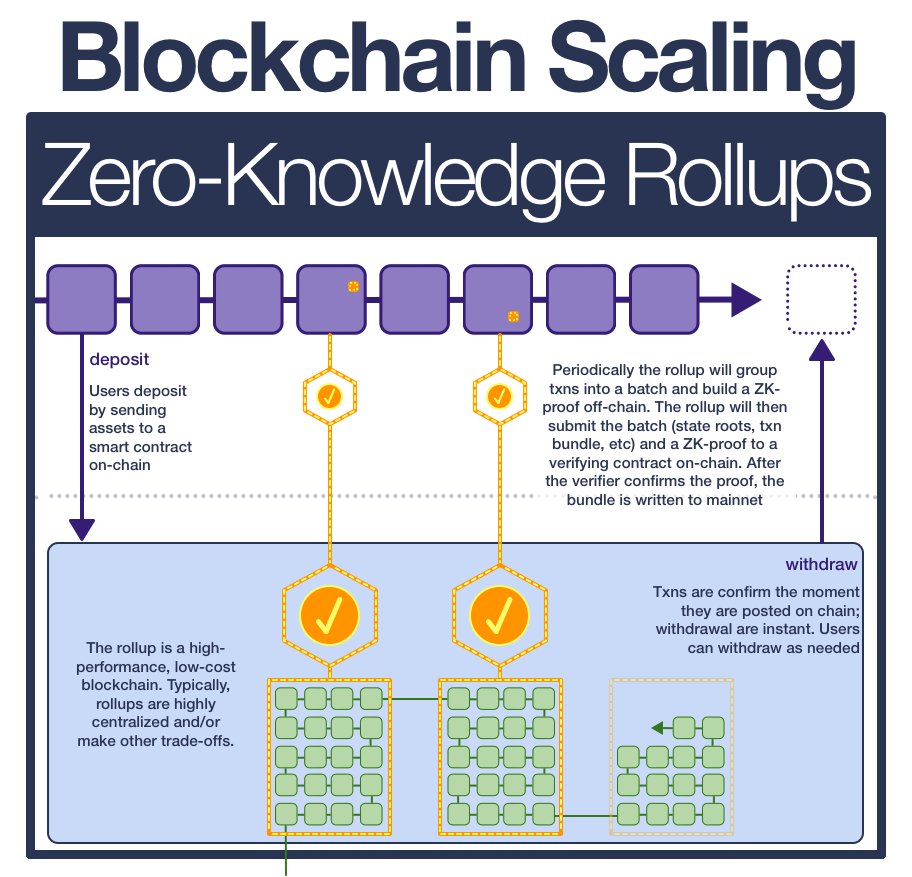
¶ Zero-Knowledge Rollups
¶ Prerequisites
¶ Settlement
Settlement is the "final step in the transfer of ownership, involving the physical exchange of securities or payment".
After settlement, the obligations of all the parties have been discharged and the transaction is considered complete.
¶ Zero-Knowledge Proof
A Zero-Knowledge Proof (ZK proof) is a way of proving a statement is valid without revealing the statement or leaking any information about it.
¶ The World Computer
In 2008, we all got a taste when Satoshi Nakamoto released Bitcoin out into the world. But in 2015 Vitalik Buterin served us the whole meal:
Ethereum, the World Computer, was born.
Unfortunately, the World Computer is SLOW...
...for now.
¶ Early Scaling
¶ State Channels
First came State Channels, which allow users to lock funds in a smart contract on Ethereum and transact freely off-chain.
This enabled users to send assets back and forth MUCH cheaper and faster than before while still (ultimately) settling to Ethereum.
While state channels are powerful they are limited:
- participants must opt-in, cannot send funds to people who are not already in the channel
- requires large amount of capital to be locked
- cannot represent objects without a clear owner (eg Uniswap)
¶ Plasma
Plasma were created in order to address (some of) these issues.
Plasma chains are independent blockchains that anchor themselves to Ethereum mainnet.
Just like Ethereum, a plasma chain has its own virtual machine state (the status/balance of every user & smart contract).
This state can be represented as a Merkle tree - a data structure that allows a huge amount of data to be compressed into a single line (Merkle root).
Once every [interval] the plasma chain will build the state Merkle tree and post the Merkle root to mainnet.
Thus, a (compressed) record of the entire plasma chain exists on mainnet.
In order to withdraw assets, a user submits the Merkle proof for that asset.
Plasma chains are a huge improvement; they can send assets to users who have not yet opted in and are much more capital efficient than state channels.
However, plasma chains still have one glaring weakness: data availability.
Data availability - the guarantee that all transaction data (in the block) will be available for network participants.
Plasma doesn't post the plasma data to mainnet, it only posts the state root. If the operator decided to stop sending Merkle proofs, users can't withdraw assets.
¶ Optimistic Rollups
And so, the solution is to post the transaction data along with the state root.
The solution is a rollup.
The first group of rollups are called Optimistic Rollups, which assumes there are no malicious actors (while providing a window to dispute any invalid transactions).
Optimistic rollups are very powerful, delivering the performance of a centralized system while still settling to Ethereum.
However, their optimistic nature requires a big trade-off: a HUGE challenge window must pass before settlement is finalized.
ZK-Rollups solve this.
¶ Zero-Knowledge Rollups
¶ Deposit
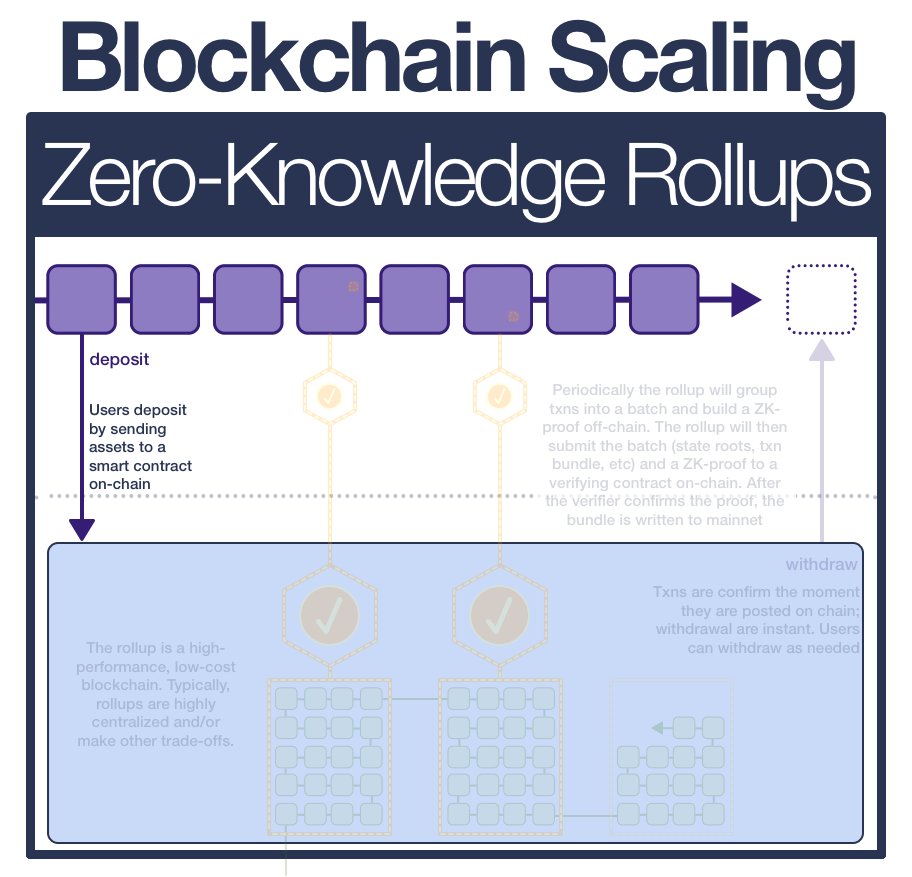
Similar to optimistic rollups, first users deposit assets into a smart contract on mainnet. The ZK-rollup operator then mints an equivalent amount of assets on the rollup chain and gives it to the depositor.
On mainnet, the assets remain in escrow.
¶ Execute
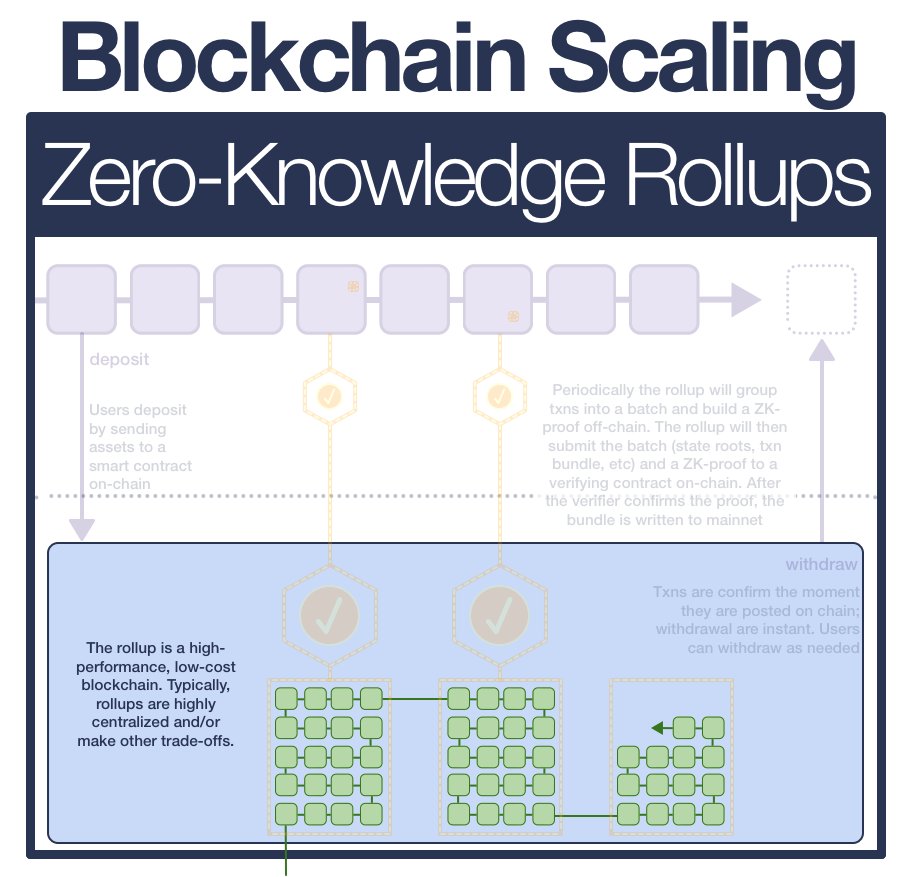
Also like optimistic rollups, ZK-rollups derive settlement from Ethereum. This allows the rollup chain to be much more centralized without sacrificing trustlessness.
From a user perspective, execution times and gas costs are SIGNIFICANTLY cheaper than using mainnet.
¶ Commit On-Chain
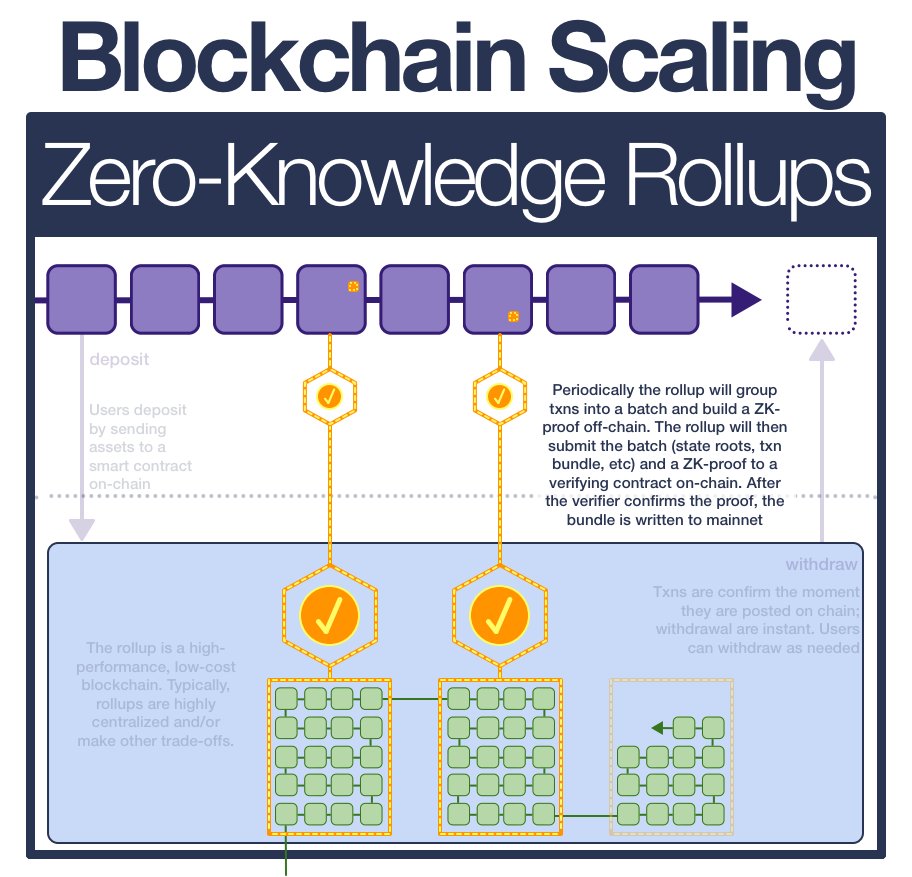
From here, both optimistic and zk-rollups bundle groups of transactions together and post a compressed version down to mainnet.
Optimistic rollups naively accept these bundles, assuming that the transactions within are valid.
On the rollup chain itself, you might never notice the challenge period... but it becomes a major issue when crossing between on and off-chain.
Modern optimistic rollups require a 7 day challenge period.
Even in Trad-Fi, 7 day settlement would be considered unworkable.
ZK-rollups seek to solve the finality question: how can we finalize the batch the MOMENT it is accepted on-chain?
The answer: Zero-Knowledge Proofs.
ZK-proofs are a category of mathematical proofs that allows one party (prover) to prove to another party (verifier) that a statement is true while also ensuring that the prover does not give the verifier any info that the verifier didn't already have.
ZK-proofs are the cutting edge of cryptographic research, details are for another time (maybe).
Here's what you need to know: proof generation is long and hard, but proof verification is quick and easy.
¶ Withdraw
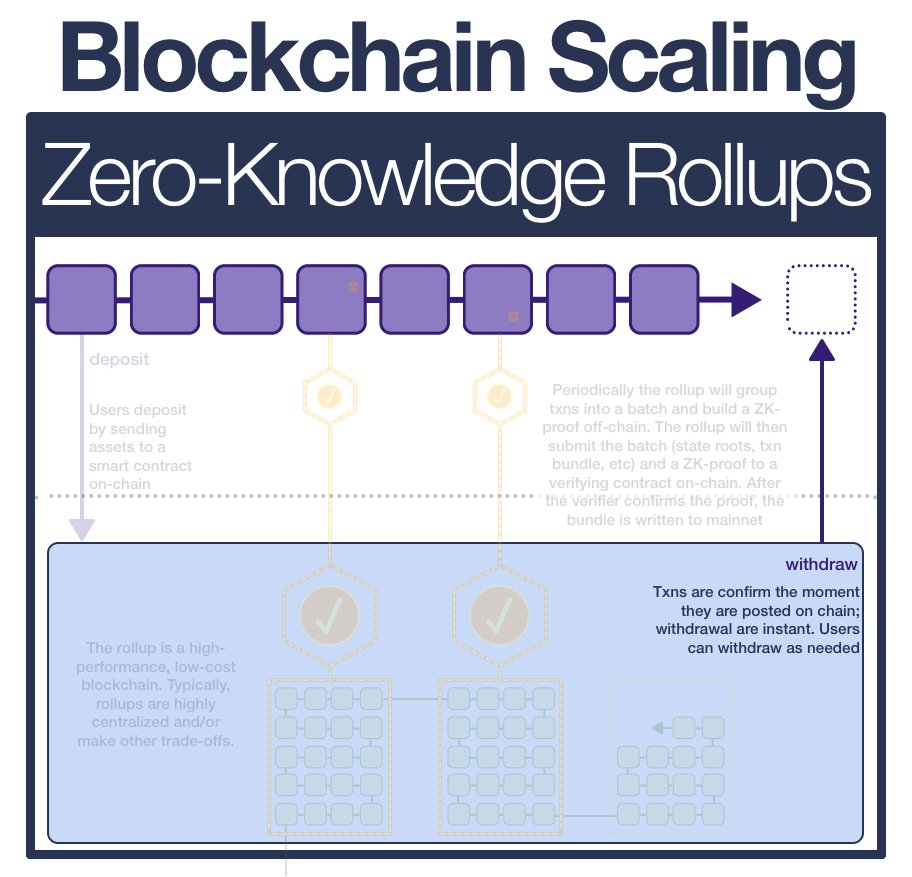
Posting a batch requires ZK-proof verification and delivers instant settlement. The rollup can therefore process withdraws instantly (no challenge window required).
¶ Space-Saving
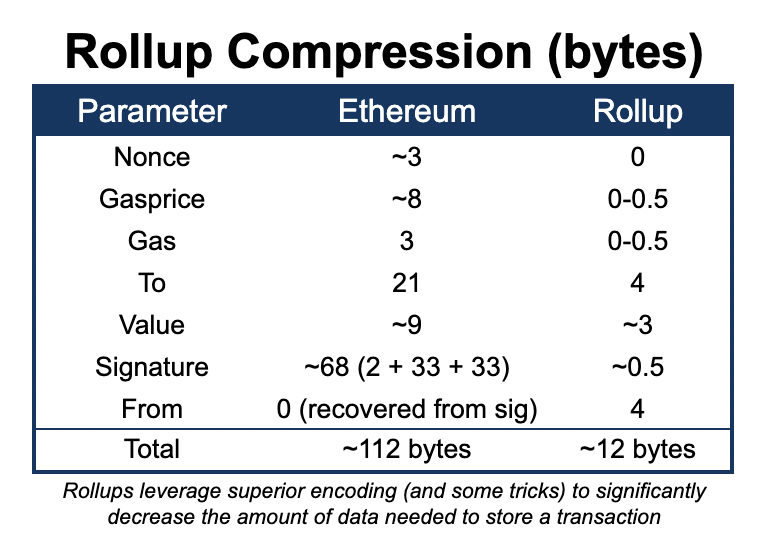
ZK-rollups have all the data compression gains of optimistic rollups, and more.
The introduction of the ZK-proof brings mathematically certainty that the batch is valid; much of the block data needed to confirm cryptographic integrity of the chain can be left off.
¶ ZK-EVM
Projects that can process all possible EVM transactions are call ZK-EVMs.
Already there are multiple ZK-EVM projects gathering a lot of attention, so much that Vitalik Buterin has developed a taxonomy to help understand the landscape and future developments.
There are 4(ish) categories of ZK-EVM:
- Fully Ethereum-equivalent
- Fully EVM-equivalent
- 2.5) EVM-equivalent, except for gas costs
- Almost EVM-equivalent
- High-level-language equivalent
¶ Summary
If you take a step back and look at the evolution of Ethereum scaling solutions, you see a theme: offload execution while anchoring settlement to mainnet.
From state channels (a single use, purpose) to ZK-rollups (persistent state, general purpose, instant settlement).
¶ Resources
Source Material - Twitter Link
Source Material - PDF